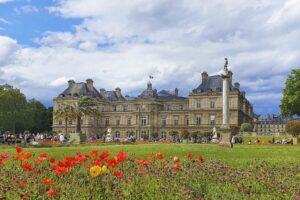Fodor's Expert Review Basilique de St-Denis
Built between 1136 and 1286, St-Denis Basilica is one of the most important Gothic churches in France. It was here, under dynamic prelate Abbé Suger, that Gothic architecture (typified by pointed arches and rib vaults) was said to have made its first appearance. The kings of France soon chose St-Denis as their final resting place, and their richly sculpted tombs—along with what remains of Suger's church—can be seen in the choir area at the east end. The basilica was battered during the Revolution; afterward, however, Louis XVIII reestablished it as the royal burial site by moving the remains of Louis XVI and Marie-Antoinette here to join centuries' worth of monarchial bones. The vast 13th-century nave is a brilliant example of structural logic; its columns, capitals, and vault are a model of architectural harmony. The facade, retaining the rounded arches of the Romanesque that preceded the Gothic period, is set off by a small rose window, reputedly the oldest in France. Check out... READ MORE
Built between 1136 and 1286, St-Denis Basilica is one of the most important Gothic churches in France. It was here, under dynamic prelate Abbé Suger, that Gothic architecture (typified by pointed arches and rib vaults) was said to have made its first appearance. The kings of France soon chose St-Denis as their final resting place, and their richly sculpted tombs—along with what remains of Suger's church—can be seen in the choir area at the east end. The basilica was battered during the Revolution; afterward, however, Louis XVIII reestablished it as the royal burial site by moving the remains of Louis XVI and Marie-Antoinette here to join centuries' worth of monarchial bones. The vast 13th-century nave is a brilliant example of structural logic; its columns, capitals, and vault are a model of architectural harmony. The facade, retaining the rounded arches of the Romanesque that preceded the Gothic period, is set off by a small rose window, reputedly the oldest in France. Check out the extensive archaeological finds, such as a Merovingian queen's grave goods. Occasional guided tours in English are offered (see website for exact times); if you'd rather explore on your own, audioguides are available for €3, as is a free English-language information leaflet.
READ LESS








